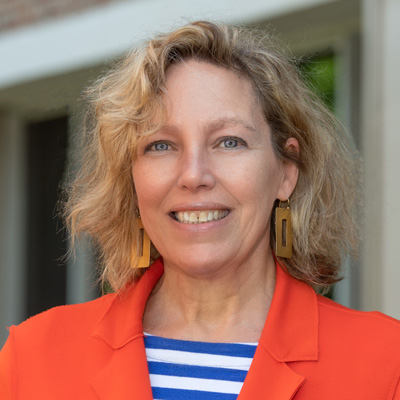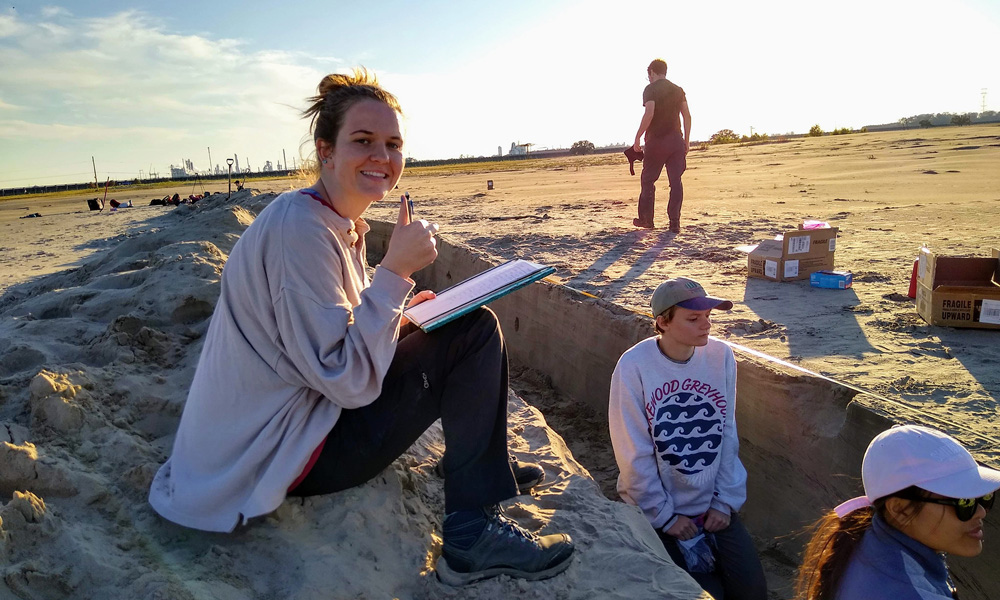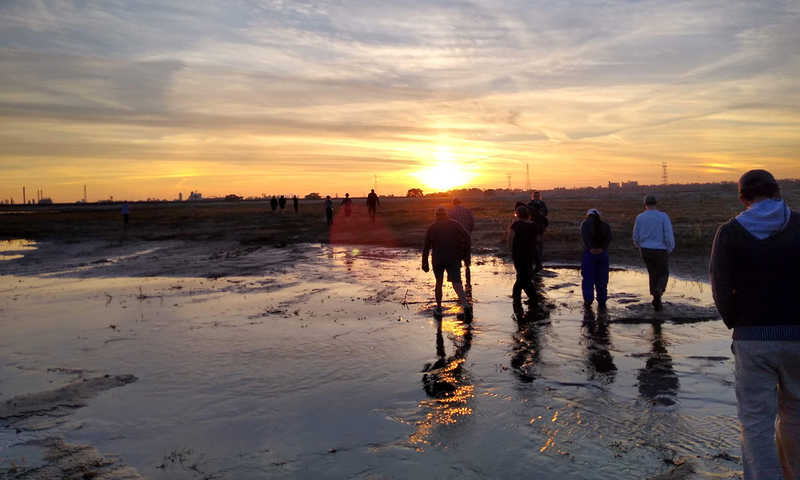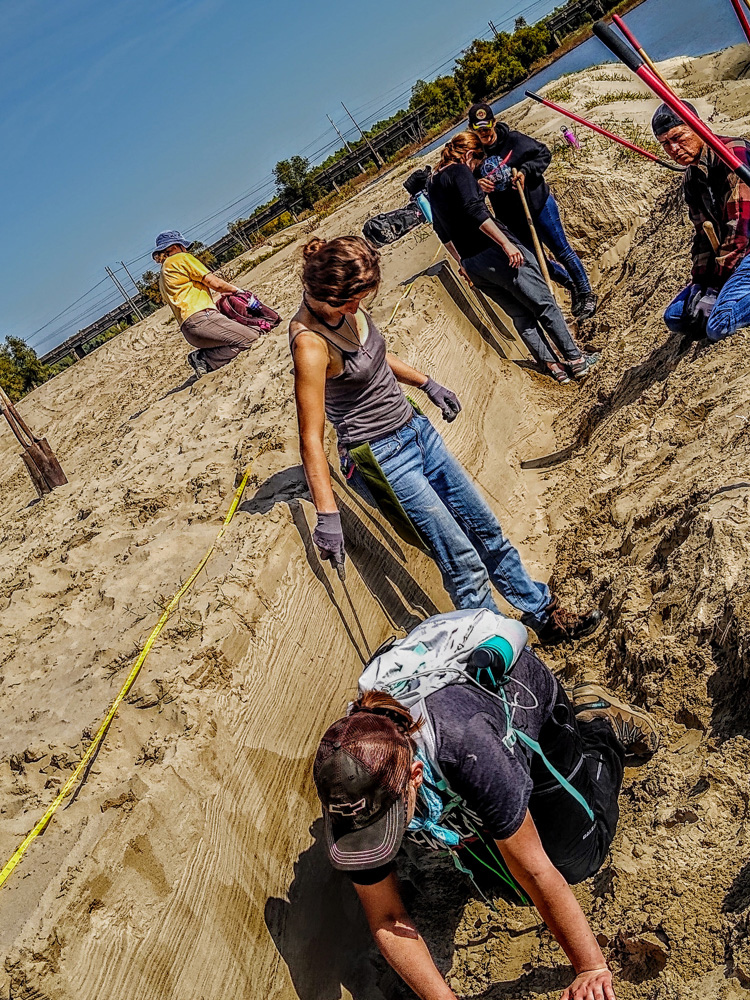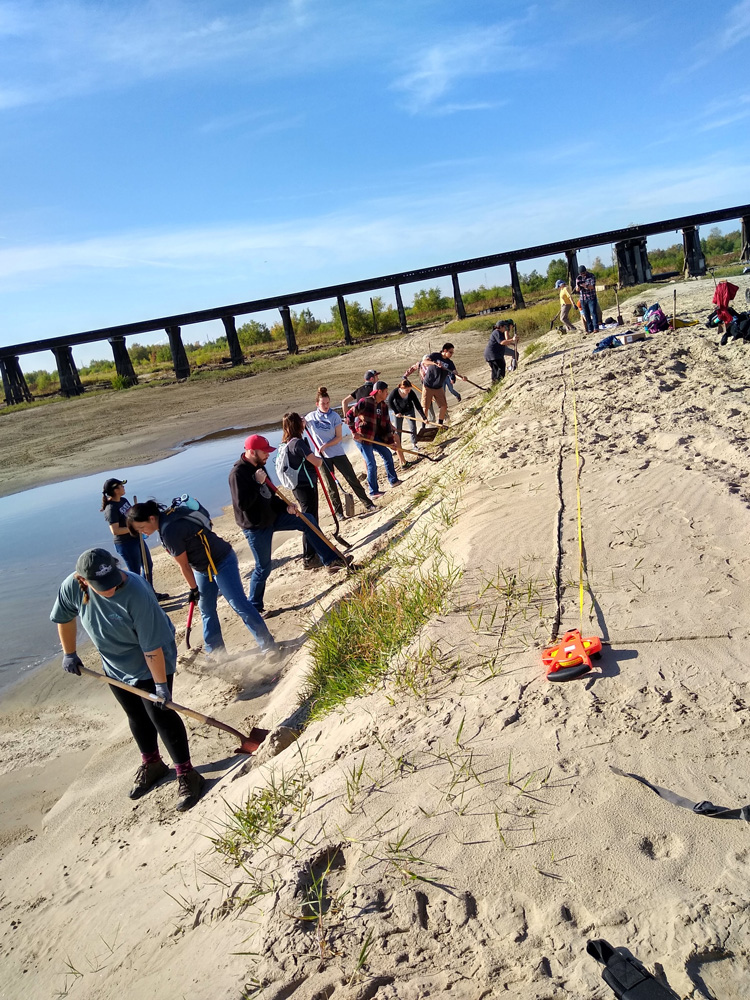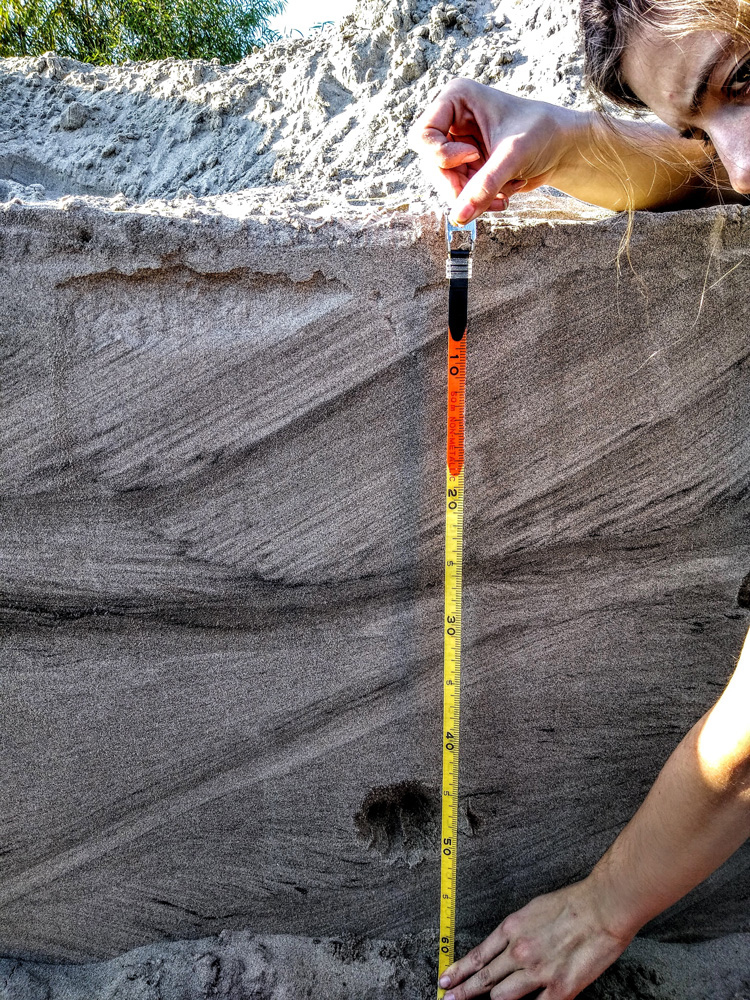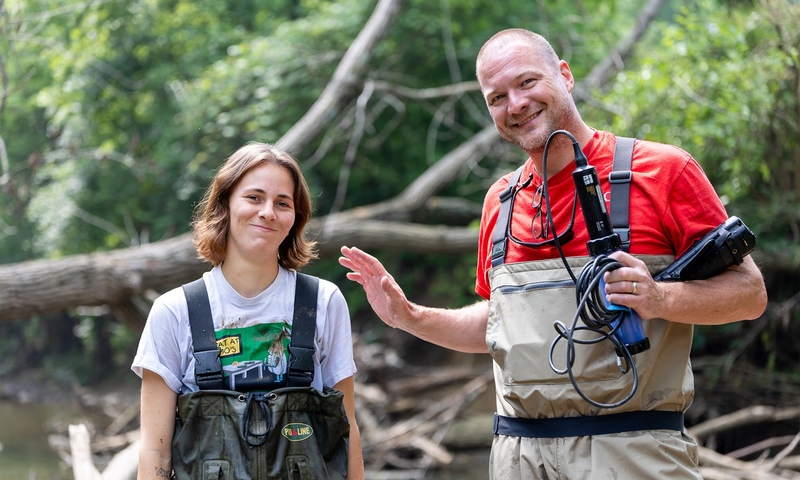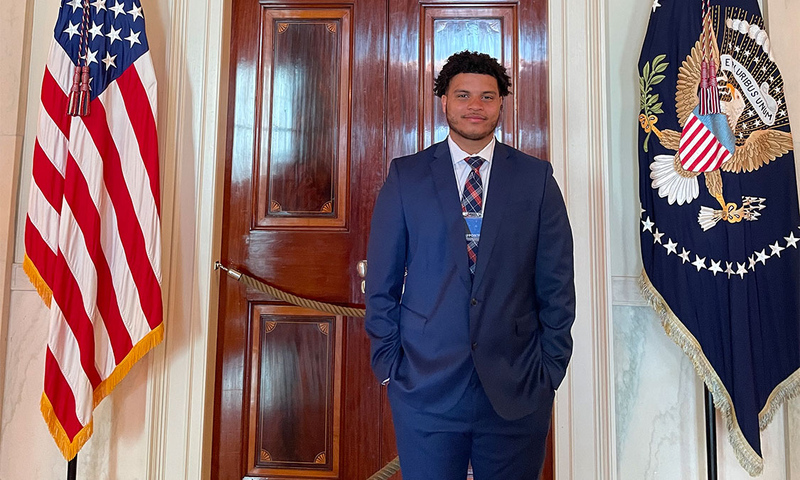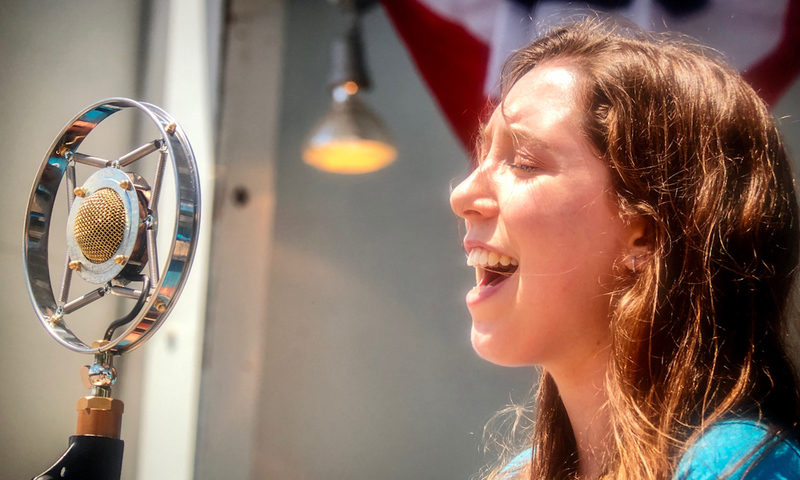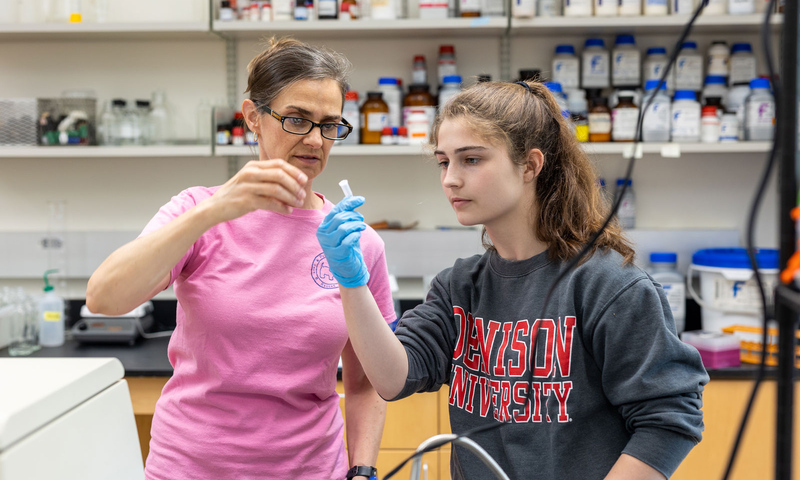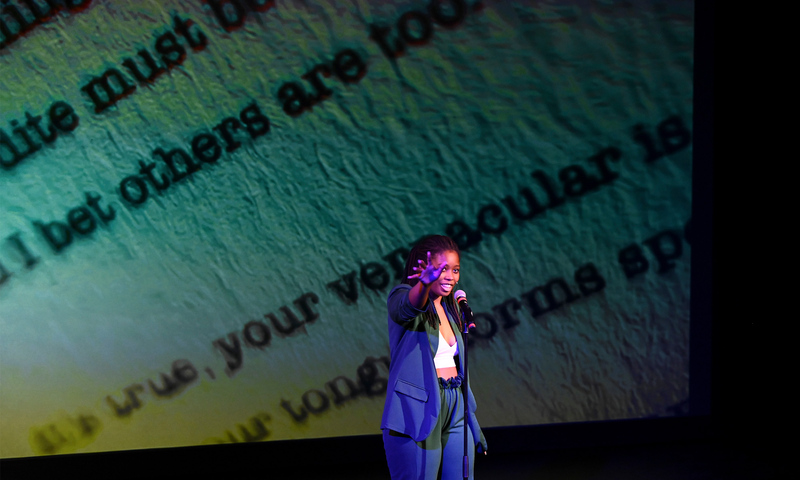Geologic time operates over eons — an almost unimaginable scale. So it’s pretty exciting when you can see these large-system processes happening in real time. Thanks to a grant from the National Science Foundation (NSF), geology students can study the impact of recent flooding on the Mississippi River delta just outside of New Orleans.
Geosciences major Laura Lapham ’22 was among 21 students from Denison and other colleges who participated in a November 2019 field study at the Bonnet Carre Spillway outside of New Orleans. They collected, analyzed and archived sediment data from deposits in the delta region, stacking up information about flooding events and how they impact the area.
“The more I learned during the dig, the more I became interested in the research we were doing. The samples we collected are important for the preservation of the Mississippi delta,” says Lapham. “I personally was excited to have a chance to participate in field experience with professionals and have a hand in collecting data for a project.”
Lapham’s research is adding to environmentally important data and has a potential impact on hundreds of thousands of people. “I feel like I’m helping preserve land — and helping so many people. It’s an unreal opportunity.”
It all started with a $200K grant from the NSF, led by Anjali Fernandes, assistant professor of geoscience at Denison, to study Mississippi River flood deposits at the Bonnet Carre Spillway outside of New Orleans. The goal? To get better at predicting flooding events in floodplains, and gain more understanding of hydrodynamic controls on sediment retention.
Flooding events along the Mississippi are becoming longer, more frequent, more dangerous, and more costly. The 2019 Mississippi floods were called “the most unprecedented of our time.”
“Vast areas of the Mississippi River Delta are rapidly disappearing due to subsidence, dwindling sediment supply, and rising sea levels. Billions of federal dollars are currently invested in mitigation strategies to combat land loss in coastal Louisiana,” says Fernandes.”
For Lapham, this was an extraordinary learning opportunity. “The entire field experience is absolutely incredible. I loved the days of looking at the sediment and digging in the sand to see interesting formations,” she says. “For an undergrad, this is important for me to learn about what geology in the field is like. I also learned a lot about the processes of deposition and the effect of flooding on the city of New Orleans.”
The whole experience was exciting as a networking experience, too. “It is a wonderful way to meet other people interested in geology from undergrads to the professionals,” says Lapham.
“Most of our time was spent in the Bonnet Carre Spillway, but we also spent part of a day in the French quarter to see the sights, and the nights eating together and walking around New Orleans. I really liked being together in the evenings and just enjoying each other’s company while also learning about the rich history of New Orleans.”
Lapham plans to do further research with the summer scholar program at Denison — and not knowing what the data will provide is part of the fun. “I have always been interested in the process of how the world works,” she says. “I found geology was what I was looking for and genuinely interesting, important, and a fun major to pursue. It provides a new view on how the environment works.”
